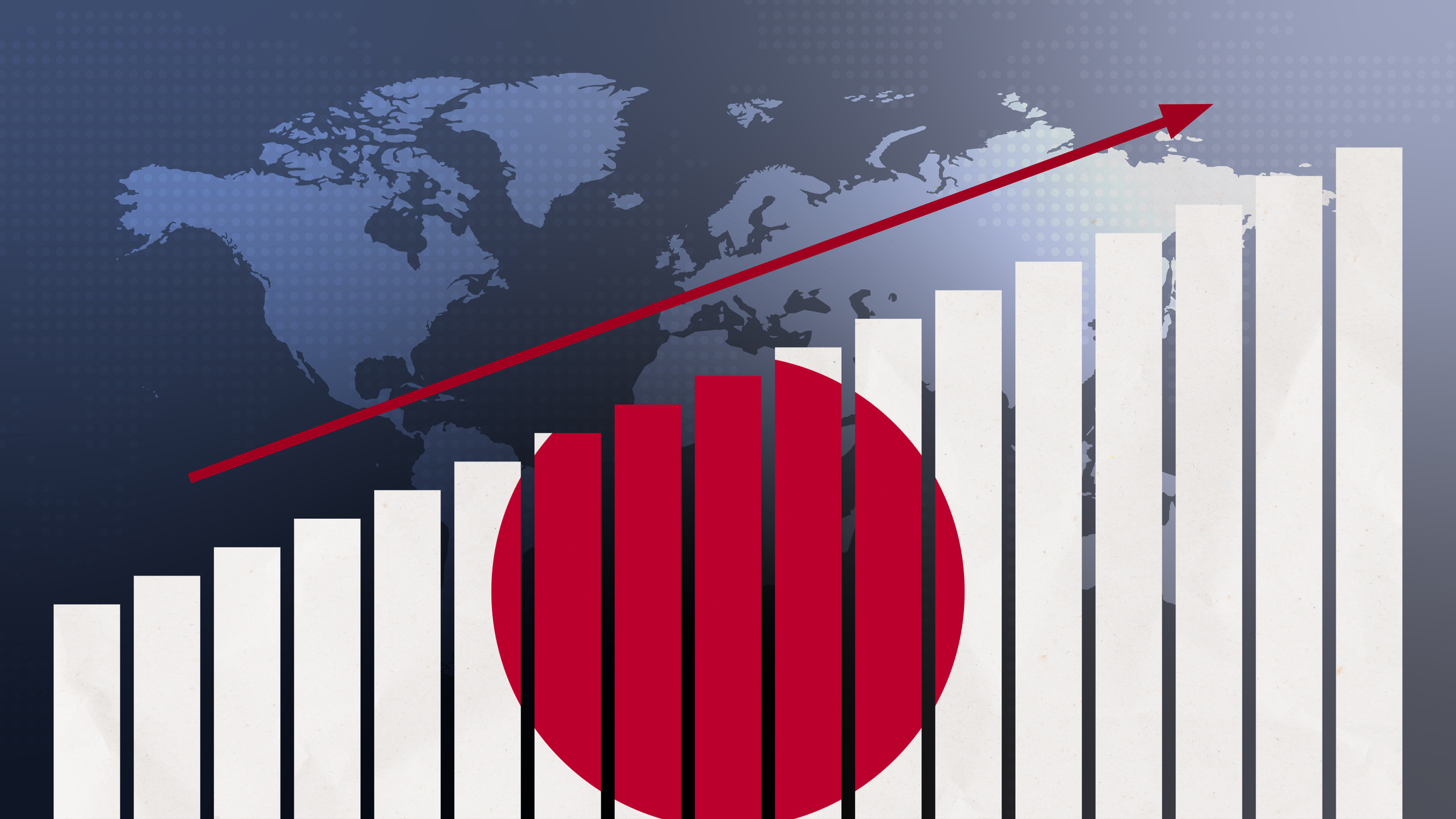India’s Blistering Growth is One to Watch: The Kiplinger Letter
With India’s GDP, population and infrastructure growing fast, the future looks bright for investment.
To understand current trends in the global economy and what we expect to happen in the future, our highly experienced Kiplinger Letter team will keep you abreast of the latest developments and forecasts (Get a free issue of The Kiplinger Letter or subscribe). You'll get all the latest news first by subscribing, but we will publish many (but not all) of the forecasts a few days afterward online. Here’s the latest…
China’s economy has been on a meteoric rise for decades, pulling hundreds of millions of its people out of poverty and reshaping the flow of world trade. Now, something similar is occurring in India. And unlike China, its rise is still unfolding. India’s GDP will double by about 2031, a blistering pace of growth. China’s growth has long led among major economies, but no longer.
Demographics are key. India’s population recently surpassed China’s and is still growing fast. Whereas China’s populace has peaked, India’s won’t for another four decades. Over the next ten years, its working-age population will grow by 100 million, an almost unfathomable increase. Also, unlike China, whose population is aging, India is a young country with a median age of just 28.4. By 2030, the median age will be just 31.7.

Sign up for Kiplinger’s Free E-Newsletters
Profit and prosper with the best of expert advice on investing, taxes, retirement, personal finance and more - straight to your e-mail.
Profit and prosper with the best of expert advice - straight to your e-mail.
In other words, its huge population, on average, skews to the young end of the spectrum for working, consuming, investing, etc., which is a tremendous advantage. India also aims to be a tech powerhouse. Call it the back office of the world, similar to how China became the world’s workshop.
Long a beneficiary of outsourcing, India has seen a dramatic increase recently in foreign companies tapping it for programming, call centers and other services. A huge, tech-literate, English-speaking workforce is a big draw, especially as the internet allows even more work to be done remotely.
New Delhi also dreams of becoming a manufacturing juggernaut. The shift by companies away from China stands to benefit India, which is seen as a safer place to do business. Apple, for instance, aims to make 25% of iPhones there in a few years. Indian exports of phones, pharmaceuticals, car parts and machinery are all growing.
A major infrastructure campaign is helping open India for global business with 70 new airports opened since 2017. Highway capacity is up 60% in less than a decade. Port capacity has grown by 83% in the past six years, while rail investment quadrupled.
Of course, the country still has plenty of problems. Corruption is a big one. Despite a series of market reforms, bureaucracy, and red tape are still enormous, which breeds endemic corruption. Much business still requires bribes to get done and crooked officials leverage their control over permits and the like to line their pockets.
Income inequality is massive. The richest 10% of Indians make up almost 60% of the nation’s income, so it’ll take time for the massive population of the poorest Indians to climb the economic ladder and fully participate in the country’s economic boom.
Still, the overall future looks bright. If you’re interested in investing in India, a few funds are recommended by the editors of Kiplinger Personal Finance magazine. Wasatch Emerging India (WAINX), has high fees but a good track record. We also like Matthews India (MINDX) and iShares MSCI India Small-Cap ETF (SMIN).
Fortunately, the U.S.-India relationship will remain sturdy despite recent hiccups. An alleged plot by an Indian government official to assassinate a Sikh activist in the U.S. is a recent source of tension, but Washington and New Delhi have managed to avoid a major row.
A similar case between Canada and India led to a huge dispute. Both countries are keen to counter China’s rise in Asia and globally. Look for Washington to solidify the partnership with more weapons exports, such as its recent shipment of Predator drones. However, India still buys most of its weaponry from Russia, preventing greater cooperation with the U.S. on issues such as Ukraine.
This forecast first appeared in The Kiplinger Letter, which has been running since 1923 and is a collection of concise weekly forecasts on business and economic trends, as well as what to expect from Washington, to help you understand what’s coming up to make the most of your investments and your money. Subscribe to The Kiplinger Letter.
Related Content
Get Kiplinger Today newsletter — free
Profit and prosper with the best of Kiplinger's advice on investing, taxes, retirement, personal finance and much more. Delivered daily. Enter your email in the box and click Sign Me Up.

Rodrigo Sermeño covers the financial services, housing, small business, and cryptocurrency industries for The Kiplinger Letter. Before joining Kiplinger in 2014, he worked for several think tanks and non-profit organizations in Washington, D.C., including the New America Foundation, the Streit Council, and the Arca Foundation. Rodrigo graduated from George Mason University with a bachelor's degree in international affairs. He also holds a master's in public policy from George Mason University's Schar School of Policy and Government.
-
 What 401(k) Savers Near Retirement Can Do Amid Market Volatility
What 401(k) Savers Near Retirement Can Do Amid Market VolatilityWhether retirement is years away, a year or two out, or in the rearview mirror, here's how to handle uncertainty in your 401(k).
By Donna Fuscaldo Published
-
 The New Space Age Takes Off
The New Space Age Takes OffThe Kiplinger Letter From fast broadband to SOS texting, space has never been more embedded in peoples’ lives. The future is even more exciting for rockets, satellites and emerging space tech.
By John Miley Published
-
 What DOGE is Doing Now
What DOGE is Doing NowThe Kiplinger Letter As Musk's DOGE pursues its ambitious agenda, uncertainty and legal challenges are mounting — causing frustration for Trump.
By Matthew Housiaux Published
-
 A Move Away From Free Trade
A Move Away From Free TradeThe Letter President Trump says long-term gain will be worth short-term pain, but the pain could be significant this year.
By David Payne Published
-
 Trump’s Whirlwind Month of Crypto Moves
Trump’s Whirlwind Month of Crypto MovesThe Kiplinger Letter The Trump administration wants to strengthen U.S. leadership in the cryptocurrency industry by providing regulatory clarity.
By Rodrigo Sermeño Published
-
 What Could Derail the Economy This Year?
What Could Derail the Economy This Year?The Letter While the outlook for the U.S. economy is mostly favorable, there are plenty of risks that bear watching.
By David Payne Published
-
 Three Ways President Trump Could Impact the Economy
Three Ways President Trump Could Impact the EconomyThe Letter Some of Trump's top priorities could boost economic growth, but others risk fueling inflation.
By David Payne Published
-
 10 Predictions for 2025 from The Kiplinger Letter
10 Predictions for 2025 from The Kiplinger LetterThe Kiplinger Letter As 2025 arrives, here are our top 10 forecasts for the new year.
By Letter Editors Published
-
 Europe Faces Economic and Political Headwinds Next Year
Europe Faces Economic and Political Headwinds Next YearThe Letter Challenges for Europe: Potential tariffs, high energy prices and more competition from China will weigh on the bloc in 2025.
By Rodrigo Sermeño Published
-
 Don't Sleep on Japan's Economic Transformation
Don't Sleep on Japan's Economic TransformationThe Letter After almost three lost decades, Japan — one of the world's biggest economies — is finally showing signs of life.
By Rodrigo Sermeño Published
